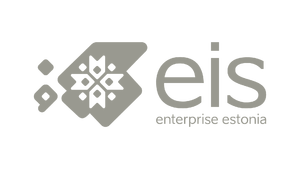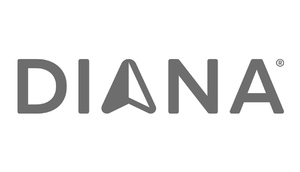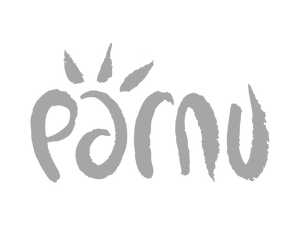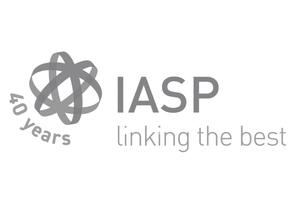30.08.2018
Estonian health community roundtable: ‘From Successful Projects to Functioning Solutions’
Representatives of a number of parties linked to the sphere of health gathered last week to discuss how to ensure that more health start-ups are launched which actually take off in terms of practical work and how to make Estonia the best place for the development of innovative health technology.
The day was opened by Connected Health cluster director Piret Hirv, who said that digital health solution developers consider Estonia attractive. A 2017 survey revealed that based on the size of the market, access to investors and doctors’ receptiveness to digital solutions, Estonia ranked 13th overall. Needless to say the most attractive markets are those which are large and wealthy, such as the United States, the United Kingdom and Germany.
Terje Peetso, a member of the Management Board of the North Estonia Medical Centre, described the hospital’s experience with start-ups, saying that what they were dealing with was not Estonia-wide solutions, but solutions for use within the hospital. NEMC is a favourable environment for the cluster’s start-ups, whose solutions are currently being piloted or whose piloting has already come to an end. Peetso stressed that digital solutions should save people time and money or guarantee better treatment results. If a solution offered by a start-up can fulfil at least one of those aims, it has proven its worth.
The piloting projects which have already come to an end at NEMC include a digital support system for mental health (Documental) and an audio checklist for nurses which supports the conducting of procedures (Cognuse), for the latter of which a follow-up project is already being planned. The CardioAI project, which is designed to help prevent sudden death from cardiac arrest, is currently underway at the hospital. Adaptations to the hINF platform are also being instigated for the consultation of chemotherapy patients, and a follow-up project on COPD smart screening is being launched. Peetso confirmed that there are projects which are set to become permanent fixtures at NEMC.
Peetso also talked about why certain projects fail to take off and what is needed in order to overcome obstacles, emphasising that both the aim of a project and the use of data need to be clearly defined and that it is important to reach beyond the piloting stage. The hospital is currently working on rules regarding how start-up processes should be initiated. The question currently before them is how digital solutions can form part of routine treatment schemes, bearing in mind that the hospital is not a guinea pig for experimentation – a start can only be made on projects that have already proven themselves to be effective.
Teemu Juutilainen from Finland, a representative of Kamu Health, gave the participants a practical example in the form of the asthma self-testing solution designed for patients. Start-up models are based on user data, in accordance with which preventive action can be taken. The strength of the application, according to Juutilainen, is its practical use: value has to be provided to users, which the Kamu solution gives them in the form of the advice they require as soon as they sign up.
Juutilainen said that in his experience the piloting of the application and finding the right partners took much longer than anticipated. The Finnish market is not big enough and must look to other countries. Cooperation is pursued with the pharmaceutical industry and with national and private insurance companies.
Liz Ashall from the Organisation for the Review of Care and Health (ORCHA) in the UK spoke about how to raise the bar even higher in regard to mobile apps. She leads an organisation that conducts reviews of such apps.
The number of mobile apps has grown rapidly and users are not necessarily able to find the right ones. But the biggest challenge in Ashall’s view is trust – and not just from a clinical perspective, but also in terms of data. For ORCHA, trust is the biggest stumbling block in the use of applications and what apps do with users’ data is carefully monitored.
ORCHA’s algorithm filters out apps that have not been updated, since if there are no technical updates there can be no clinical updates either, Ashall remarked.
ORCHA provides an overview of the most frequently used apps. In the case of specific apps, evaluations are shared with the developers so that the applications can be made even better.
When asked what the best kind of health app is, Ashall felt unable to give any concrete examples – she said that a product has to be suited to the technical needs of the end user, but that no one application will suit everyone. For example, it needs to be borne in mind whether the user is looking for information for themselves or for their child, what the condition is they are seeking information on and what the functions and possibilities of the app are.
Jordi Piera Jiménez from Spain spoke about the journey of innovative solutions from piloting to routine use. He stressed that medics tend to be very conservative, which is why it is important to get doctors involved in the development of solutions. As such, more attention should also be given to the training of doctors at university. He also mentioned that nurses are often more open to change.
Priit Kruus from Dermtest gave a summary of experiences in piloting nine Estonian start-ups. These include software solution developers and product providers as well as those still being piloted and those already adopted for use. The majority of start-ups teams include a business developer, a software developer and an expert in a specific field, while fewer feature data scientists and people with experience of clinical trials. The average team comprises 5.5 people. A third of companies pay salaries to all of their employees. The average time taken to reach the piloting stage with actual users from the development of the beta version was 7.1 months, with piloting itself lasting eight months on average. The main hurdles for start-ups are finding an appropriate business model or founding a company and integration with other information systems.
Andy Bleaden from the European Connected Health Alliance outlined the types of Horizon 2020 support that can be applied for. One of the secrets to successful applications, he revealed, was an ability to summarise a project in 20 words or less.
Erki Mölder, a member of the Supervisory Boards of Unimed Grupp and Qvalitas Arstikeskus, the chairman of the Supervisory Board of Enterprise Estonia, the mentor in the field of health at Tehnopol Science Park and a jury member for the entrepreneurial competitions Ajujaht and Prototron, said that systems based on solidarity do not survive. Technology offers more opportunities to both the sick and the healthy, to hospitals and to health care service providers.
Mölder emphasised that the ideal health technology start-up should know what they are doing from a technological perspective, should stand out in the field of medicine and should also be strong in the field of business so as to understand the interests of insurers, hospitals, the pharmaceutical industry, doctors, patients and relatives alike.
The day was summarised by Riin Tark from Triumf Health, who shared her experience of how to establish a start-up. She highlighted the importance of knowing your client who is the best investor; putting together a dedicated team; taking part in a variety of competitions so as to boost your visibility; and coming up with a long-term plan.
The ‘Estonian health community roundtable, vol. 3’ organised by Connected Health was held on 23 August in Sagadi.
The Estonian Connected Health Cluster (ECHC), led by Tehnopol Science Park, is a community of Estonian players in the field of health whose shared goal is to implement technology in order to offer even better health-related products and services.

















